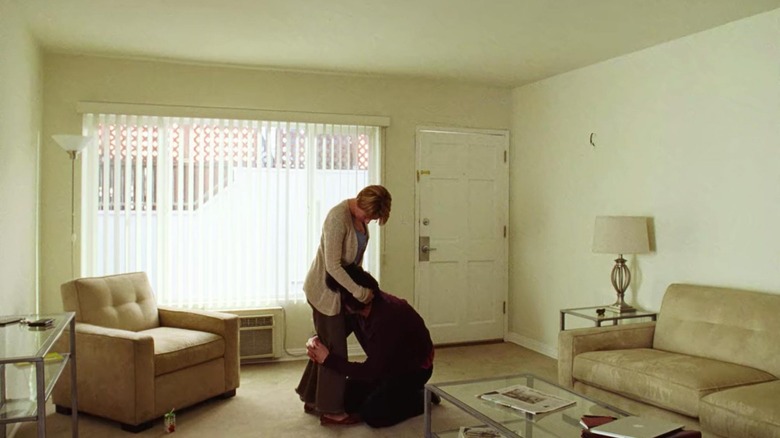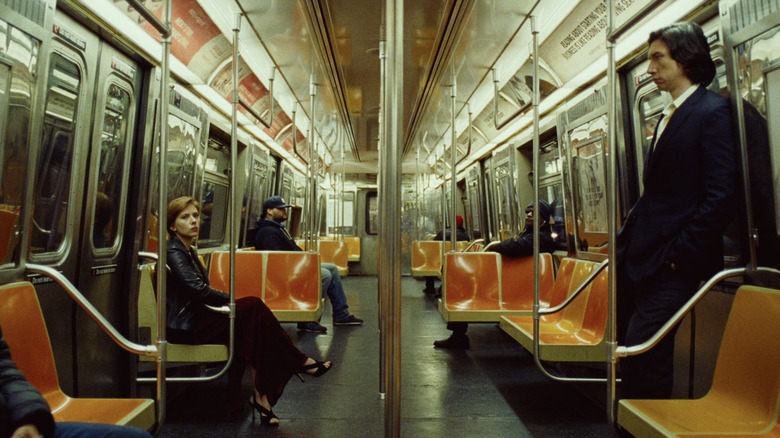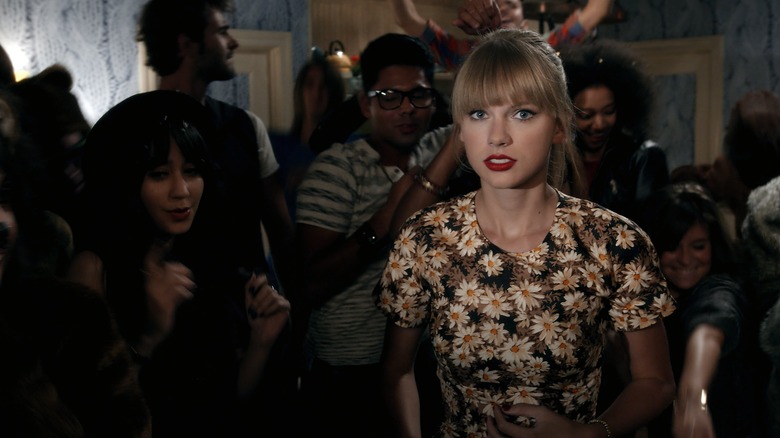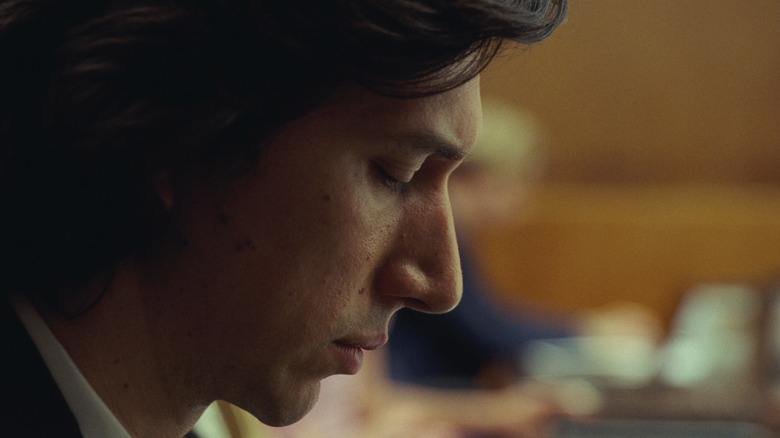Hollywood Studios Are In A Toxic Relationship And They Need To Break Up
The AMPTP has existed in one form or another for almost a century, but the Alliance of Motion Picture and Television Producers as we now know it was created in early 1982. It came together in the wake of a three-month strike by the Writers Guild of America in 1981 that had come hot on the heels of a three-month actors strike in 1980. Hollywood's battle-worn studios and television networks agreed to form a single organization that would negotiate with the guilds on behalf of all of them. After all, if the strikes had taught them anything, it's that there's strength in numbers.
"By having a unified position in the industry, we have less chance of that kind of disruption," proclaimed Nick Counter III, the first president of this new-and-improved AMPTP.
Six years later, Counter was negotiating against the longest writers strike in the history of Hollywood (at 154 days, it still hasn't been beaten ... yet). He died in 2009, not long after heading up AMPTP-side negotiations for the 2007/08 writers strike. And now, Hollywood is once again at a standstill amid a writers strike that has lasted more than four months, and is running alongside an actors strike that's coming up to the two-month mark. The industry hasn't faced a dual strike like this since 1960, which is so long ago that SAG President Ronald Reagan was leading the pro-union charge.
Thus far, the AMPTP has made little progress towards ending the strikes. Maybe it's time to consider whether these strikes should be the end of the AMPTP.
We just want different things
If the goal of the AMPTP was to minimize disruption, it's safe to say that it has fallen short of those ambitions. Right now the trade organization appears to be playing hardball at the expense of, well, just about everyone. From film crews waiting to get back to work, to exasperated exhibitors watching release dates get pushed back, to the studios themselves starving their production pipelines and taking hits at the box office.
It's a lot of fun to watch Warner Bros. Discovery CEO David Zaslav being drowned out by boos and chants of "Pay your writers!" during his attempt at a university commencement speech. But it's actually quite hard to pin down what exactly is the driving force behind the AMPTP's intransigence. Some lay the blame with the organization's current president, Carol Lombardini, for using an outdated playbook. Other corners of the rumor mill point to specific AMPTP members for refusing to budge on certain issues.
It's easy to see how that might cause friction. One of the biggest sticking points in negotiations with both the WGA and SAG-AFTRA is transparency over streaming numbers; the guilds want a clearer picture of viewership for the purpose of fairly distributing streaming residuals. Studios like Disney, Netflix, and Warner Bros. Discovery really don't want to share that information. This means that other major AMPTP members like Sony and Lionsgate, which don't have their own streaming platforms, are stuck dying on a hill that they probably don't even care about.
Uh-oh, the girls are fighting
Besides having different key interests, there's a wild degree of variation in the amount of financial pain that AMPTP's member studios are suffering as a result of the work stoppage. Netflix's total box office grosses last year amounted to $88.3 million, a tiny fraction of its $31.6 billion overall revenue. The streaming service survived its first six years without any original content at all, and could probably survive for quite a while longer just on people binge-watching "Suits."
But for Disney, which generated a box office gross of $4.9 billion last year? It's not so easy to pivot the business away from the whole "making movies" thing. The Marvel Cinematic Universe is already taking hits; "Deadpool 3" has been quietly moved off its coveted May 2024 release slot, per Disney's latest earnings call. Last month, the company's share price sank to its lowest point in nine years, and The Motley Fool pointed to the strikes as a "crucial" problem for Disney's chances of recovery.
Perhaps that's why there are signs of in-fighting behind the scenes. We've previously explained why you shouldn't take anything you read about the strikes in Hollywood's trades at face value, and that still holds true, but quotes planted in a recent Deadline article do suggest that the various heads of the AMPTP hydra are starting to snap at each other. Some sources divert blame away from AMPTP leadership; others accuse Netflix CEO Ted Sarandos of botching negotiations. Meanwhile, Warner Bros. Discovery boss David Zaslav and Disney's Bob Iger both got slapped with the insult "thin-skinned." Ouch.
If the AMPTP members are indeed fighting among themselves, it's little wonder they can't pull together for long enough to resolve the strikes.
The world moves on
The strength structure behind collective bargaining for a trade organization like AMPTP isn't entirely dissimilar to the way in which unions wield the collective strength of workers. The idea is to take away alternatives: for the unions, leverage lies in making sure the studios can't just hire writers or actors who aren't on strike; for the studios, it means making sure that writers and actors can't find other writing and acting work. If Disney shut down productions in an effort to hold out against an actors strike while all the other studios happily agreed to the guild's proposals and carried on filming, then Disney would very clearly be shooting itself in the foot. The studios need to present a united front in order to "win."
But while "solidarity!" is an inspirational rallying cry among workers, media conglomerates aren't such a fan of showing solidarity to their direct competitors. And it's especially hard to hold the line when parts of the industry are already getting back to work. AMC Networks recently cut a deal with SAG-AFTRA to resume production on its "Walking Dead" spin-offs and "Interview with the Vampire." SAG-AFTRA has also granted waivers to A24 movies, since A24 is not an AMPTP member. And while it might be a smaller indie distributor, it's become a serious contender at the box office. "Talk To Me," a $4.5 million Australian horror movie that A24 picked up at Sundance, has grossed more than both of Universal Pictures' 2023 "Dracula" spin-offs combined.
And it's not just uppity indie studios that AMPTP members have to worry about. Last week, AMC Theatres snatched a ready-made Taylor Swift concert movie out from under their noses, and it grossed $26 million on its first day of ticket pre-sales. Now that theaters chains can legally branch out into producing and distributing movies, they could potentially emerge as new competition outside of the existing clubhouse.
Sometimes, the strike breaks you
At this point, it's pretty clear that the guilds are not the reason these strikes are lasting so long. It took the AMPTP three solid months to get back to the negotiating table with WGA, only to blow it up all over again. 53 days into the actors strike, SAG-AFTRA chief Duncan Crabtree-Ireland said that the guild is "still ready and willing to negotiate a fair deal, but we have not heard a word from the AMPTP."
There is precedent for studios breaking away from a negotiating pact. In 1975, Paramount and Universal both exited the Association of Motion Picture and Television Producers (an earlier version of the AMPTP) to form their own alliance, called ... the Alliance (this is why studio execs need writers, everybody).
Between theatrical releases, linear television, streaming content (original and non-original), and good old physical media, the landscape of entertainment is broader than ever. And in the current negotiations, venerable Hollywood studios like Warner Bros. and Paramount are standing alongside reps from tech giants like Apple, a company for whom the $1 billion committed to producing movies each year adds up to roughly 0.3 percent of total operating expenses.
Writers and actors' needs are pretty simple: they want to be able to pay the rent and put food on the table. But with varying special interests and degrees of investment, the present-day Hollywood studio system might simply be too big and too complex to stay housed under the same roof.




